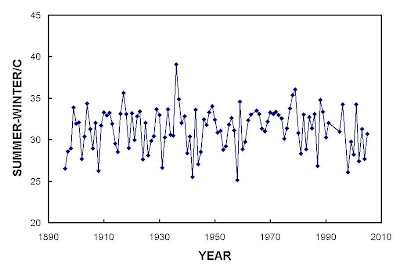Eli posted the new American Association of Petroleum Geologists climate change policy with the remark that it was a mouse, but a mouse is better than a rat. Some disagreed, claiming that rats are cuter and smarter. As a keeper of whip smart anonymice, Eli disagrees, but de gustibus non est disputandem (Eli won't bother arguing with your bad taste). It is interesting to read the AAPG President's column which opened season on the previous policy.
During my tenure as president I have received correspondence from members on various topics -- but the two largest volume topics have been the proposed “graduated dues” structure and AAPG’s current position on global climate change.
Members have threatened to not renew their memberships if the graduated dues system is passed, or if AAPG does not alter its position on global climate change (although not the same members). And I have been told of members who already have resigned in previous years because of our current global climate change position.
and continued
My response is: You have a much better chance of changing AAPG from within than from without. It sounds like the old saying, “Don’t throw the baby out with the bath water.”
This year’s Executive Committee has listened to members’ views on global climate change, and we have appointed an “all-star,” balanced committee to recommend a set of facts on global climate change (see box above).
As stated in my January President’s Column, this committee’s work should result in a set of facts on climate change that will replace the current position paper and that can be distributed at member’s request in the form of a pocket-sized card. This change is occurring because we are listening to AAPG members, not because we are listening to members of other organizations.
Appointing the ad hoc global climate change committee was one of my most important tasks this year as president. I relied upon the wisdom of the Executive Committee, but also DEG President Jane McColloch and DPA President Rich Green. Every member I asked to serve on the committee agreed because it is such an important issue to him or her, and they want AAPG to “get it right.”
Why is AAPG’s position on climate change so important?
AAPG is indebted to this dedicated committee, and we are anxious to see their recommendation
- Members need facts to communicate with their own communities, newspapers and government officials as debate on climate change policies intensify both in the United States and globally. Global policy makers need our geologic input to make scientifically sound decisions.
- The current policy statement is not supported by a significant number of our members and prospective members.
Being president of AAPG is challenging and consuming, but the attitude and help from volunteer members make it all worthwhile.Comments on the proposed AAPG statement have been closed to non-members. Rabett Run posted some of the comments when they were open and Eli wonders if an AAPG member could do the same for later posts.
A somewhat discouraging marker of how the proposed document was watered can be found by comparing a part of the draft
Public concern over the potential impacts of climate change is growing because observations demonstrate that the planet has been warming since the middle to late 19th century and increasingly sophisticated climate models predict increased future warmth (IPCC 2007). These conclusions have been articulated mainly by climate scientists, through reports of the National Academy of Sciences, American Geophysical Union, American Association for the Advancement of Science, and the American Meteorological Society.to the final document on the same point
Certain climate simulation models predict that the warming trend will continue, as reported through NAS, AGU, AAAS, and AMS. AAPG respects these scientific opinions but wants to add that the current climate warming projections could fall within well-documented natural variations in past climate and observed temperature data. These data do not necessarily support the maximum case scenarios forecast in some models. To be predictive, any model of future climate should also accurately model known climate and greenhouse gas variations recorded in the geologic history of the past 200,000 years.One wonders where the AAPG found climate simulation models that do not predict the warming trend will continue, have they been consulting with Piers Corbyn and Co, and then, of course we can haggle about accurately. Ethon, Eli has been told, is looking for his liver oil pill container and hopes to peck up a storm.










